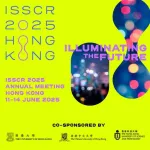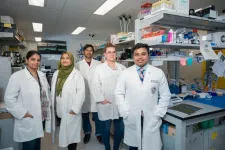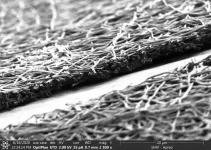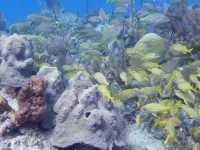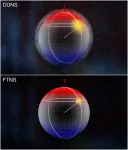(Press-News.org) The International Society for Stem Cell Research (ISSCR) convenes world-renown scientists dedicated to stem cell research and regenerative medicine each year at its annual meeting to share the year’s most compelling basic discoveries and clinical breakthroughs in the stem cell field. Abstract submission and registration for ISSCR 2025, taking place 11-14 June 2025, will open on 2 October 2024. Abstracts submitted by 21 January 2025 will be considered for oral presentations and merit and travels awards.
The ISSCR is proud to announce the ISSCR 2025 Plenary Sessions and Speakers:
Plenary I: Presidential Symposium
Yasmine Belkaid, PhD, Institut Pasteur, France
Cassandra Extavour, PhD, Harvard University, USA
Masayo Takahashi, MD, PhD, Vision Care Inc., and Kobe City Eye Hospital, Ritsumeikan University, Japan
Plenary II: Development Across Scales: From Fertilization to Tissues to Animals
Misao Fujita, MS, MPH, PhD, Center for iPS Cell Research and Application, Kyoto University, Japan
Tao Tan, PhD, Kunming University of Science and Technology, China
Bo Wang, PhD, Stanford University, USA
Hongmei Wang, PhD, Institute of Zoology, Chinese Academy of Sciences, China, Anne McLaren Memorial Lecture
Plenary III: Second Phase of Life: Adult Homeostasis
Paola Arlotta, PhD, Harvard University, USA , Ernest McCullouch Memorial Lecture
Yi Chin Toh, PhD, Queensland University of Technology, Australia
Vidita Vaidya, PhD, Tata Institute of Fundamental Research, India
Hongyan Wang, PhD, Duke-NUS Medical School, Singapore
Plenary IV: Stem Cell-Based Research and Therapies for Human Disease
Stuart Forbes, PhD, The University of Edinburgh, UK
Masaya Nakamura, PhD, Keio University, Japan
Wenning Qin, PhD, eGenesis, USA, John McNeish Memorial Lecture
Jean Yang, PhD, University of Sydney, Australia
Plenary V: Awards and Keynote session
Speakers and award winners to be announced.
ISSCR 2025 is co-sponsored by The University of Hong Kong, The Chinese University of Hong Kong, and The Hong Kong University of Science and Technology. The Hong Kong Innovation and Technology Commission, the Hong Kong Convention and Exhibition Centre, and the Hong Kong Tourism Board provided significant support to enable the ISSCR to bring its hallmark event to the city of Hong Kong.
About the International Society for Stem Cell Research (ISSCR.org)
With nearly 5,000 members from 75+ countries, the International Society for Stem Cell Research is the preeminent global, cross-disciplinary, science-based organization dedicated to stem cell research and its translation to the clinic. The ISSCR mission is to promote excellence in stem cell science and applications to human health. Follow ISSCR on X: @ISSCR
###
END
EL PASO, Texas (June 6, 2024) — Researchers at The University of Texas at El Paso are developing a new therapeutic approach that uses nanoparticles for the treatment of skin and lung fibrosis, conditions that can result in severe damage to the body’s tissues.
Md Nurunnabi, Ph.D., is an associate professor in UTEP’s School of Pharmacy and the lead researcher on two studies published this June in the medical Journal of Controlled Release; one study focuses on skin fibrosis and the other on lung fibrosis.
“We are closer than ever ...
DALLAS, June 5, 2024 — Nine out of 10 people who suffer cardiac arrest outside of the hospital die, and cardiopulmonary resuscitation (CPR), especially if performed immediately, can double or triple survival rates.[1] That is why the American Heart Association, celebrating 100 years of lifesaving service, will broaden efforts to drive CPR education at the community level through the Heart Walk® campaign. Heart Walk is the Association’s largest community-based activation engaging more than 220 cities ...
Restricting menthol flavor in cigarettes while making nicotine replacement therapy, such as a skin patch that can help ease withdrawal, more available and affordable has the potential to reduce socioeconomic disparities in tobacco use.
That was one of the findings in a study published in May in Nicotine and Tobacco Research that marks a new use of existing data from the Fralin Biomedical Research Institute at VTC’s Addiction Recovery Research Center. Researchers analyzed data from their Experimental Tobacco ...
It’s an unusual collaboration. Botanists and archaeologists don’t often work together, unless they’re studying the way people have used plants through time. But a new four-year grant from the National Science Foundation is shaking things up. It provides more than $1 million to study how Mediterranean plants that people have largely ignored evolved and diversified in one of the most formative periods of human history.
“The Mediterranean is at the crossroads of Europe,” said Nicolas Gauthier, curator ...
DURHAM, N.C. -- Biomedical engineers at Duke University have developed a silk-based, ultrathin membrane that can be used in organ-on-a-chip models to better mimic the natural environment of cells and tissues within the body. When used in a kidney organ-on-a-chip platform, the membrane helped tissues grow to recreate the functionality of both healthy and diseased kidneys.
By allowing the cells to grow closer together, this new membrane helps researchers to better control the growth and function of the key cells and tissues of any organ, enabling them to more accurately model a wide range of diseases and test therapeutics.
The research appears June 4 in the journal Science Advances.
Often ...
What species live in this coral reef, and are they healthy? Chemical clues emitted by marine organisms might hold that information. But in underwater environments, invisible compounds create a complex “soup” that is hard for scientists to decipher. Now, researchers in ACS’ Journal of Proteome Research have demonstrated a way to extract and identify these indicator compounds in seawater. They found metabolites previously undetected on reefs, including three that may represent different reef organisms.
Plants and animals living in coral reefs release various substances, from complex macromolecules to individual amino acids, into the surrounding water. To determine ...
https://www.scienceopen.com/hosted-document?doi=10.15212/CVIA.2024.0033
Announcing a new article publication for Cardiovascular Innovations and Applications journal. This study was aimed at investigating factors influencing the progression of native coronary atherosclerosis after percutaneous coronary intervention (PCI).
A cohort of 462 patients was classified into progressive (n = 73) or non-progressive (n = 389) groups according to the presence of native coronary atherosclerosis progression on coronary angiography. ...
One of the biggest challenges in quantum technology and quantum sensing is “noise”–seemingly random environmental disturbances that can disrupt the delicate quantum states of qubits, the fundamental units of quantum information. Looking deeper at this issue, JILA Associate Fellow and University of Colorado Boulder Physics Assistant Professor Shuo Sun recently collaborated with Andrés Montoya-Castillo, Assistant Professor of Chemistry, and his team to develop a new method for better understanding and controlling this noise, potentially paving the way for significant advancements in quantum computing, ...
For a tiny hunter of the microbial world that relies on extending its neck up to 30 times its body length to release its deadly attack, intricate origami-like cellular geometry is key. This geometry enables the rapid hyperextensibility of the neck-like protrusion, for single-celled predator Lacrymaria olor, a new study reports. The findings not only explain L. olor’s extreme shape-shifting ability but also hold potential for inspiring innovations in soft-matter engineering or the design of robotic systems. Single-celled protists are well known for their ability to perform dynamic morphological changes in ...
In a Policy Forum, R. Scott Kemp and colleagues argue that promoting new nuclear reactor technologies using high-assay low-enriched uranium (HALEU) threatens the international system of controls that has prevented nuclear weapons proliferation for over 30 years. “Governments and others promoting the use of HALEU have not carefully considered the potential proliferation and terrorism risks that the wide adoption of this fuel creates,” write Kemp et al. The authors warn that if HALEU becomes a standard reactor ...
